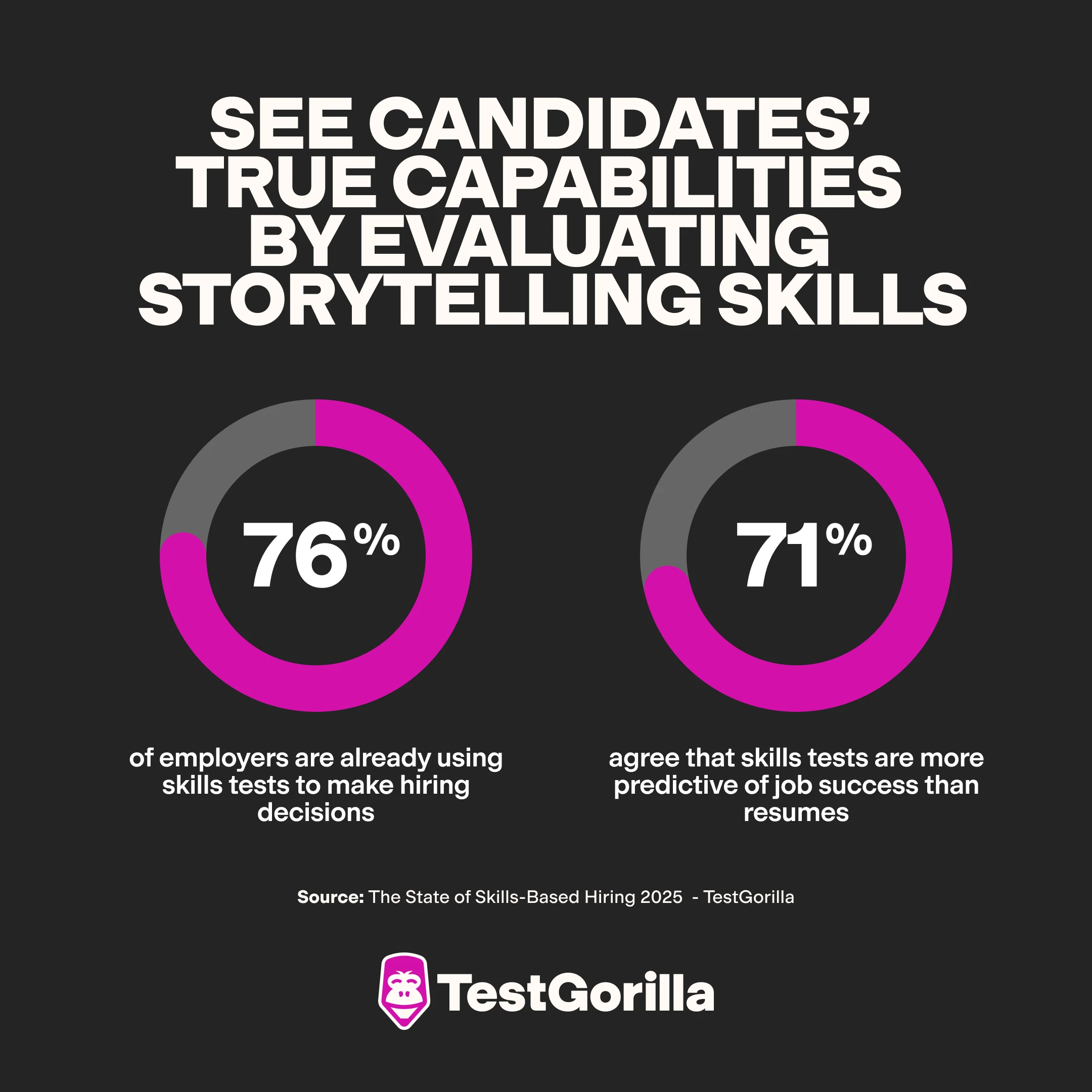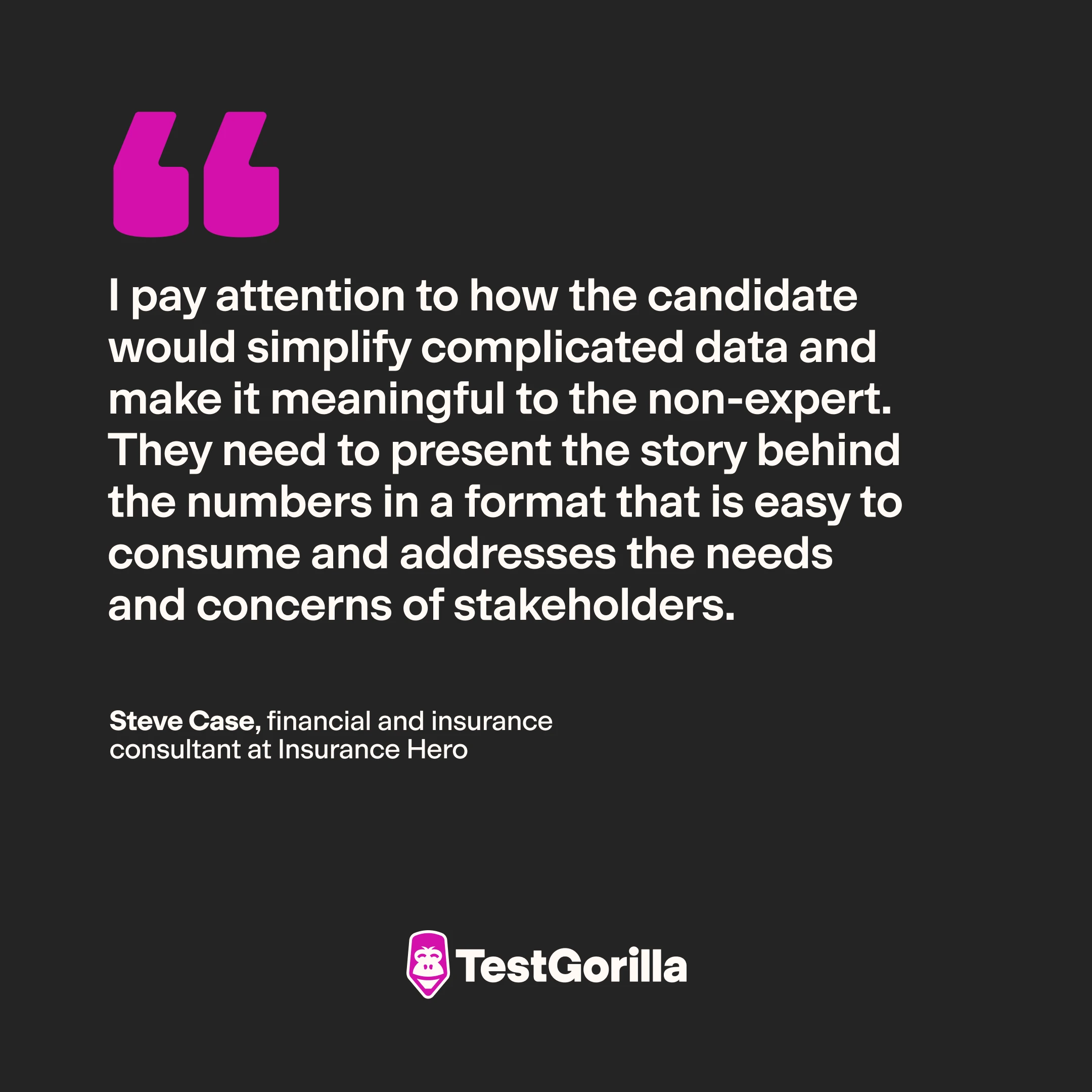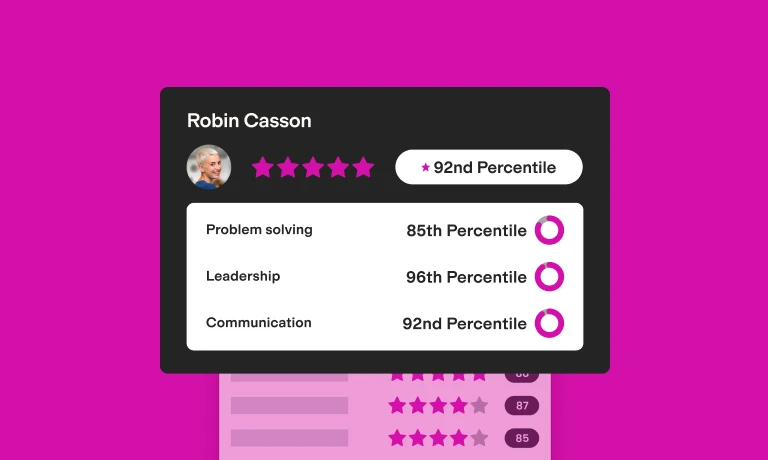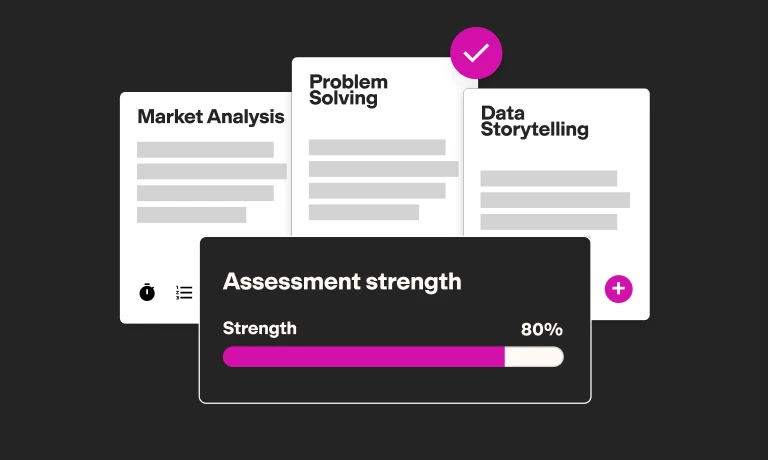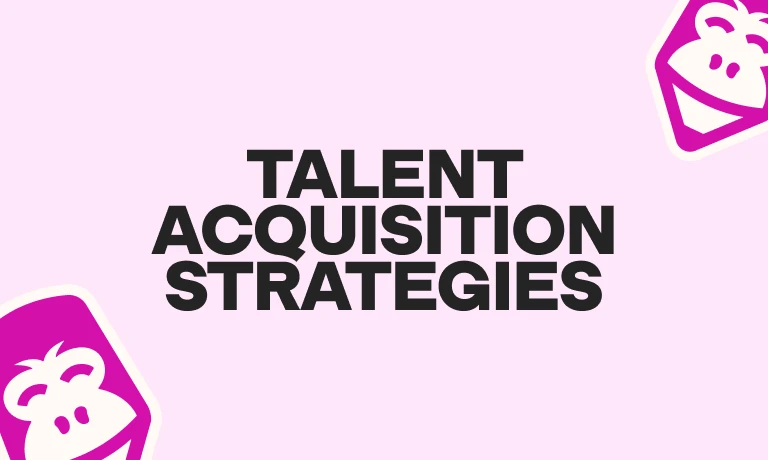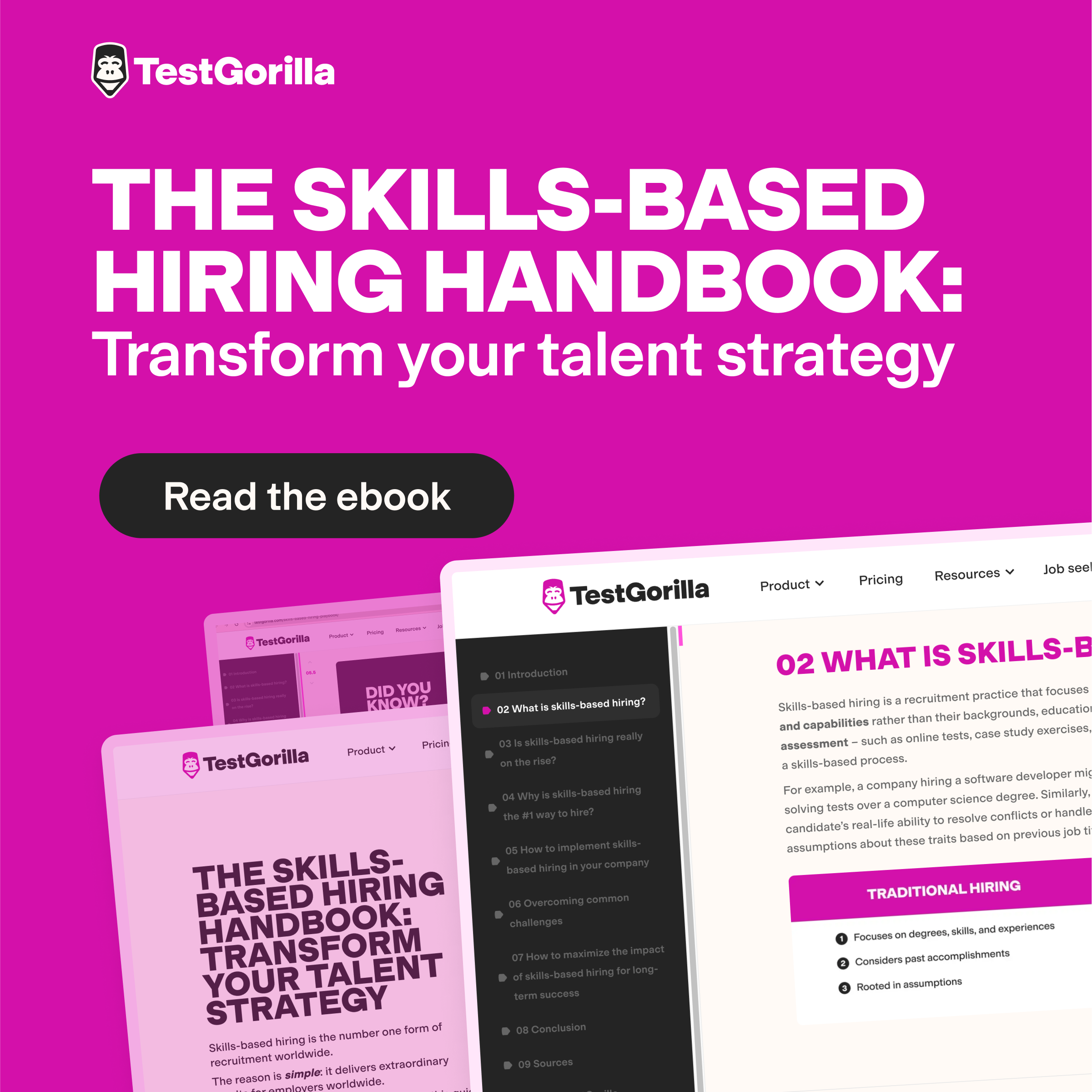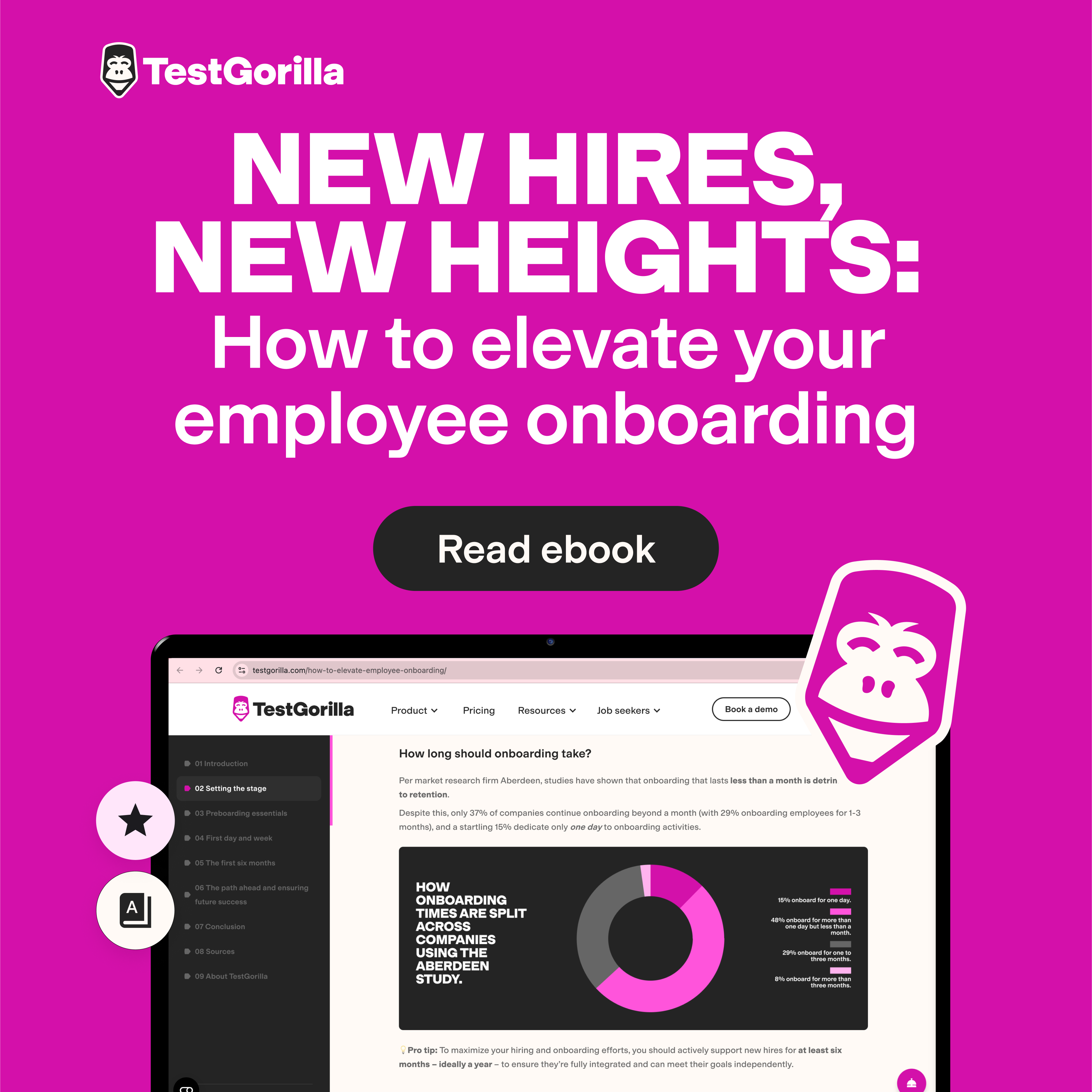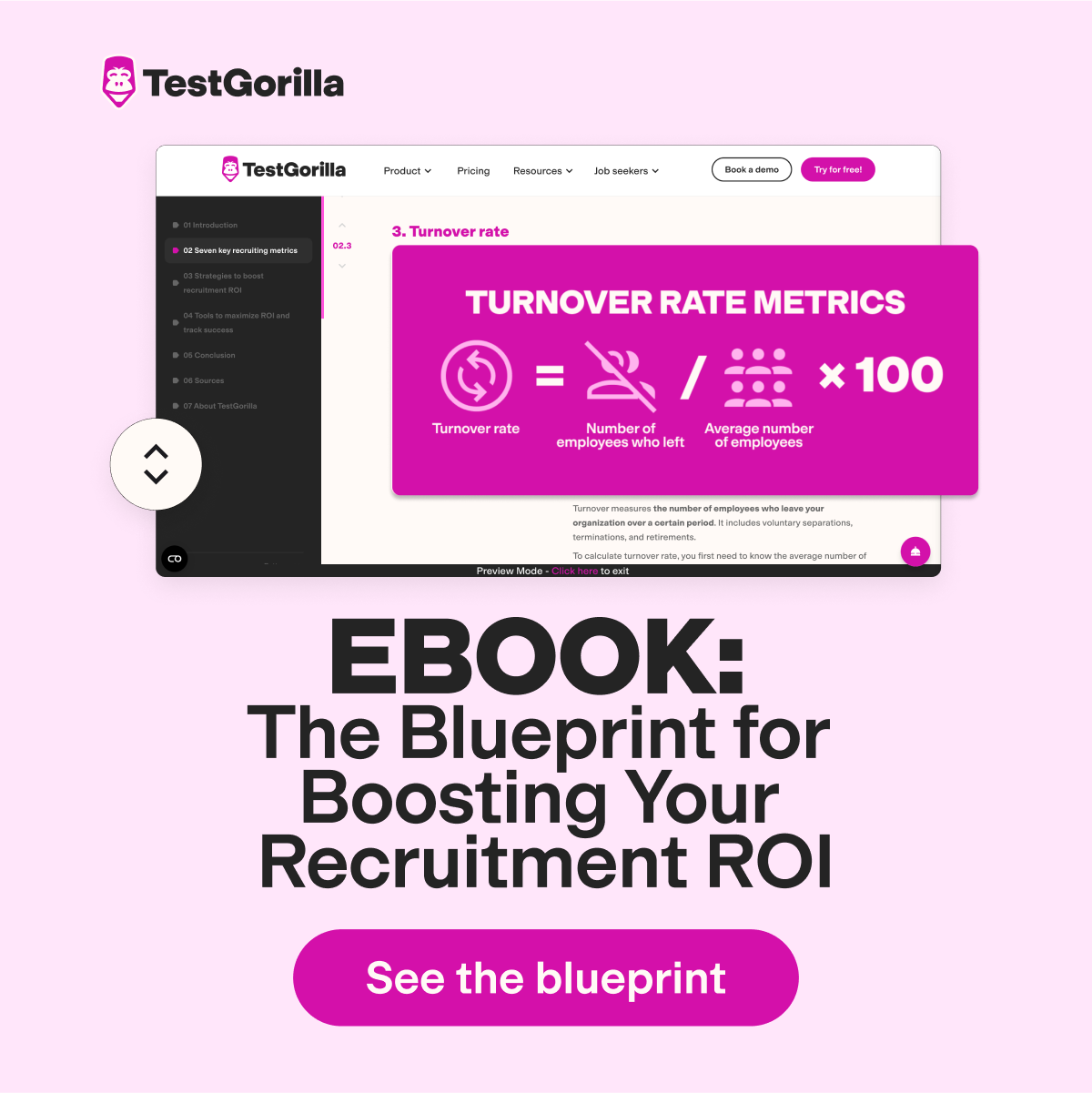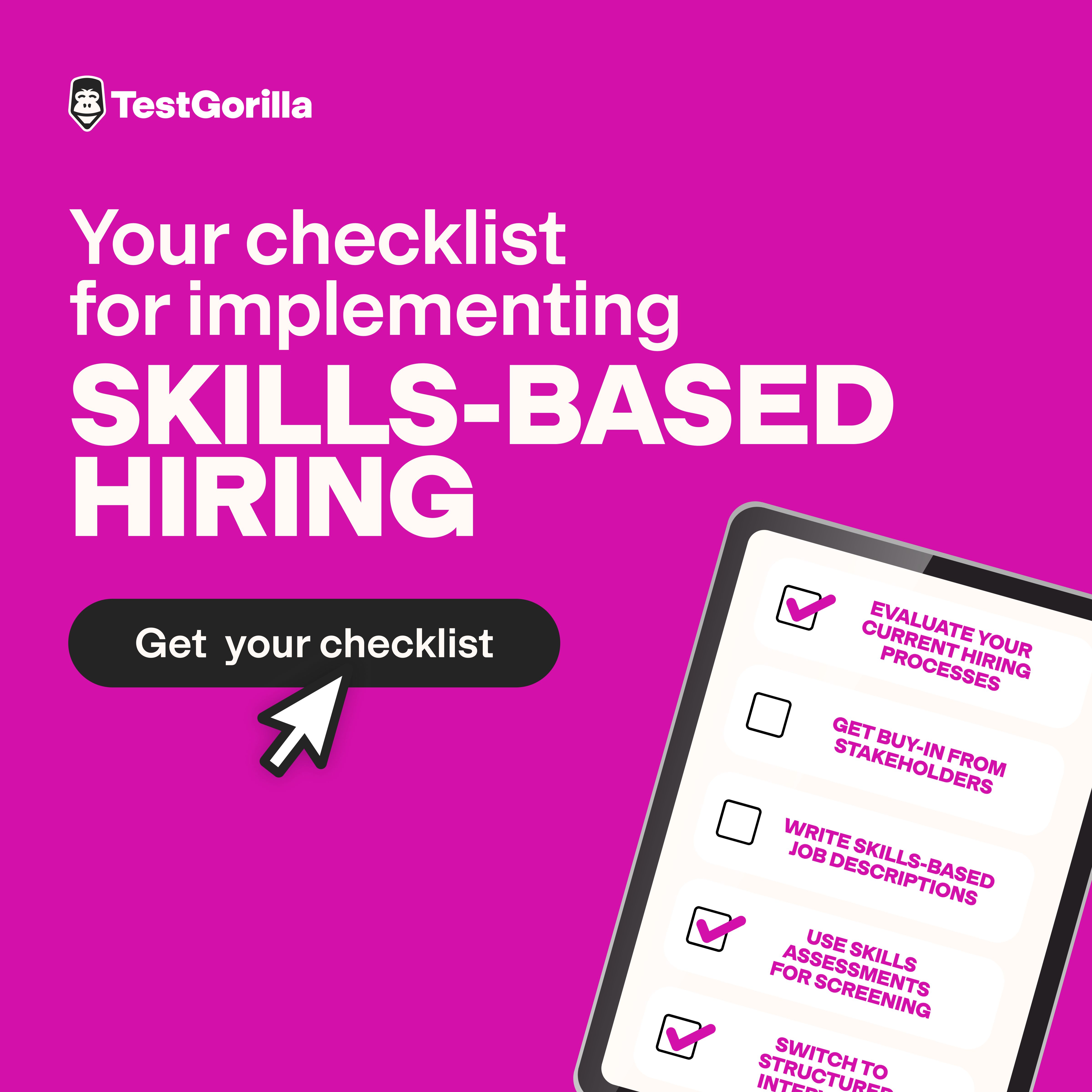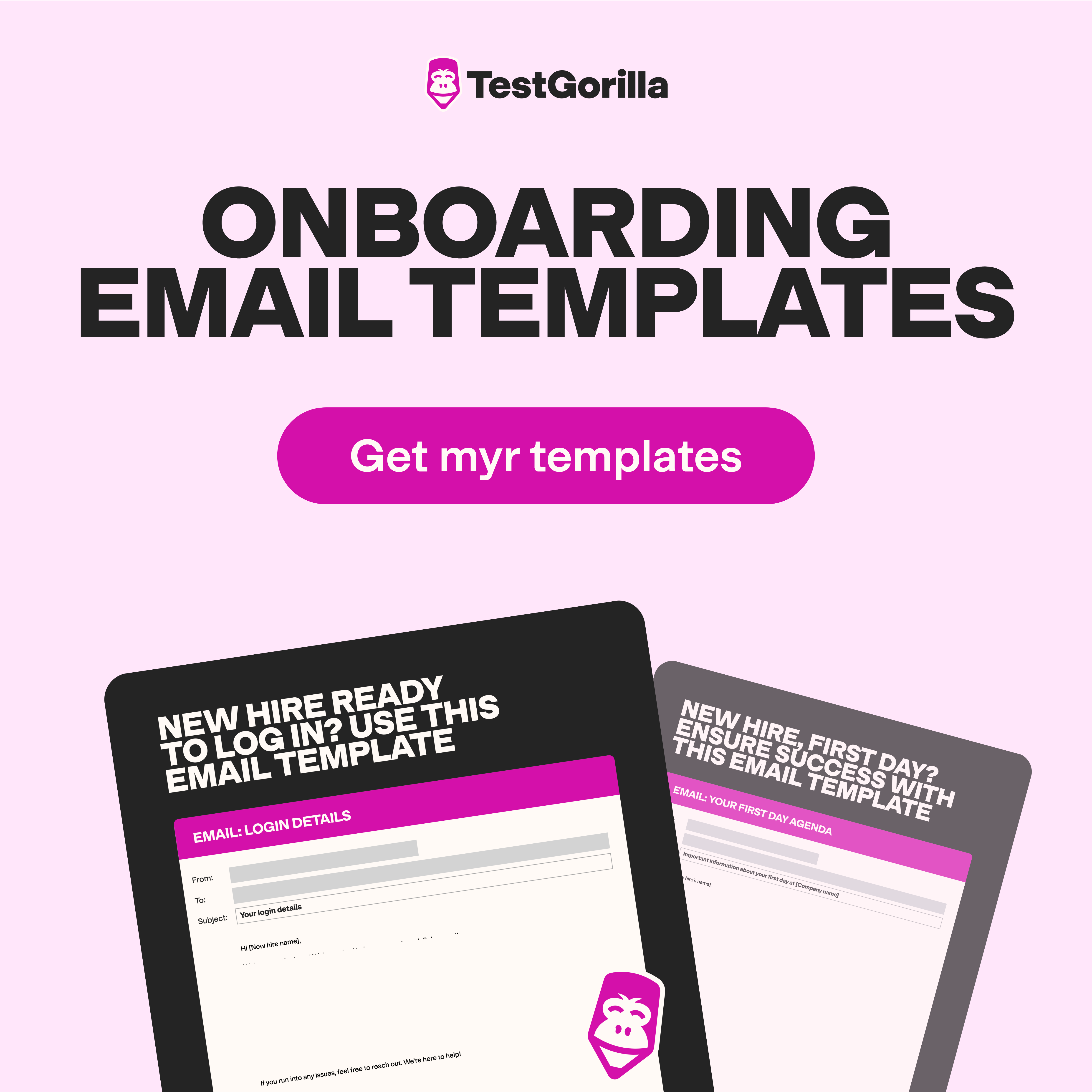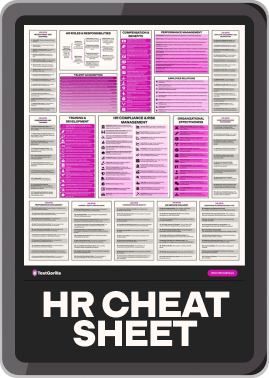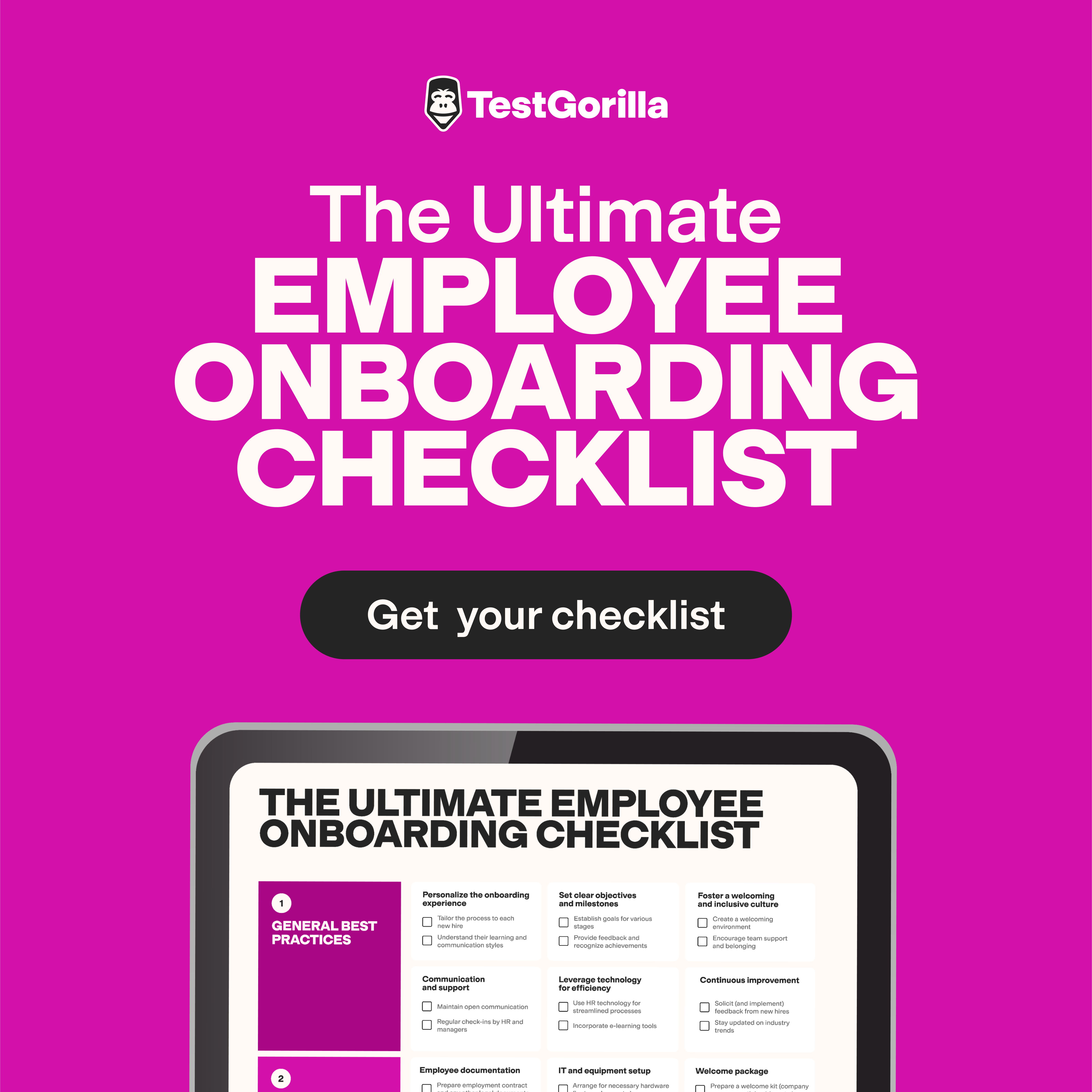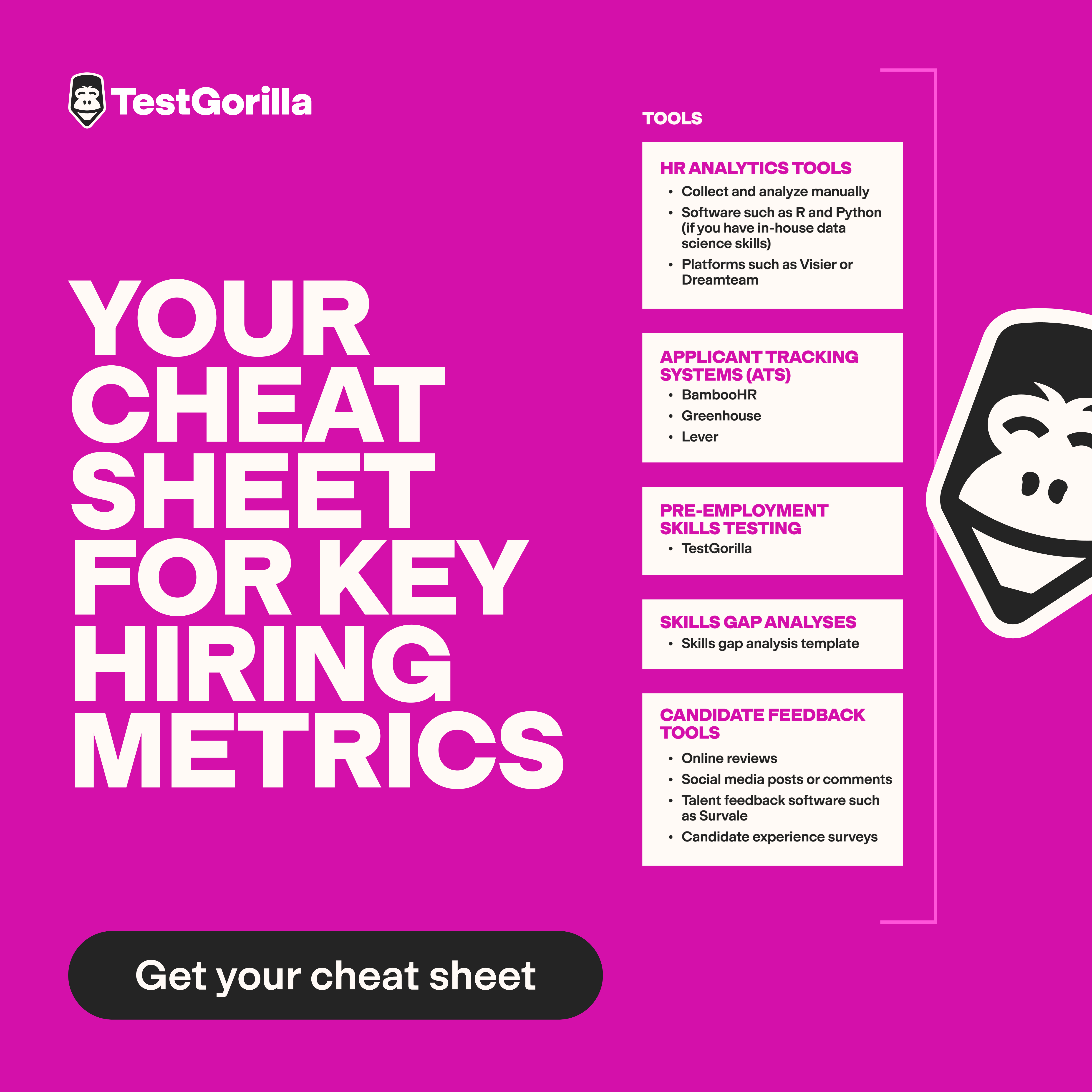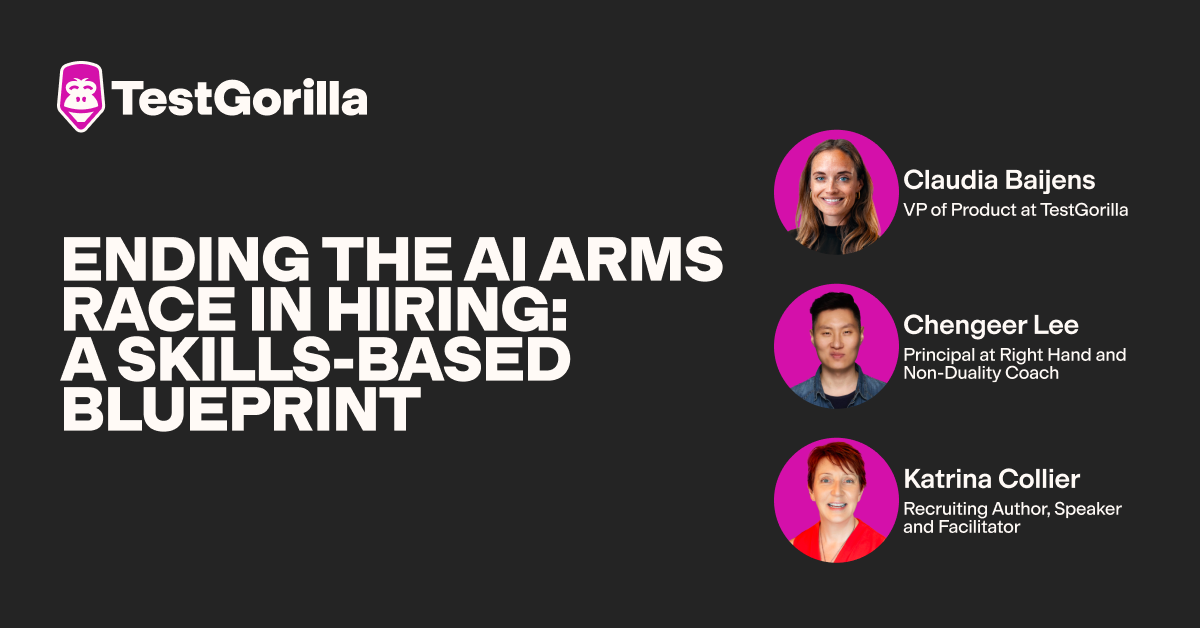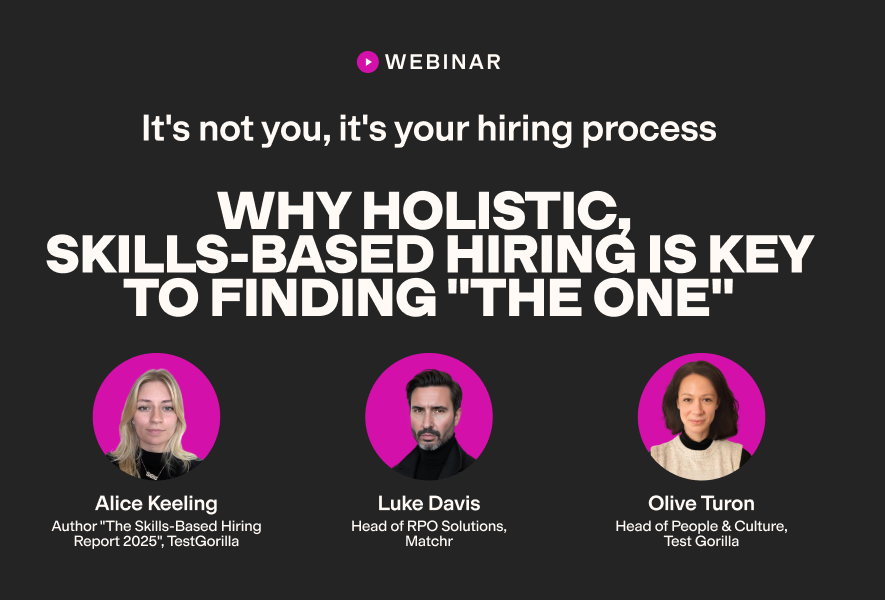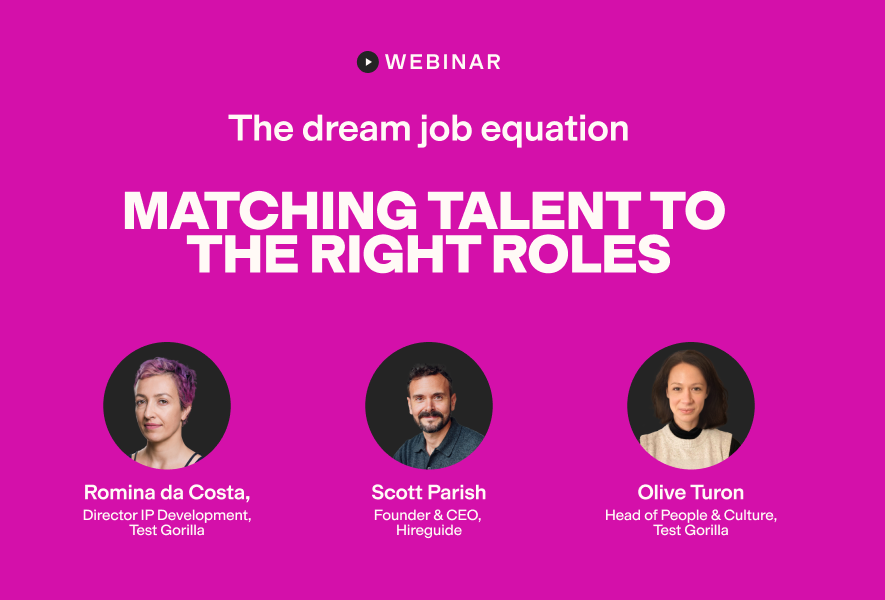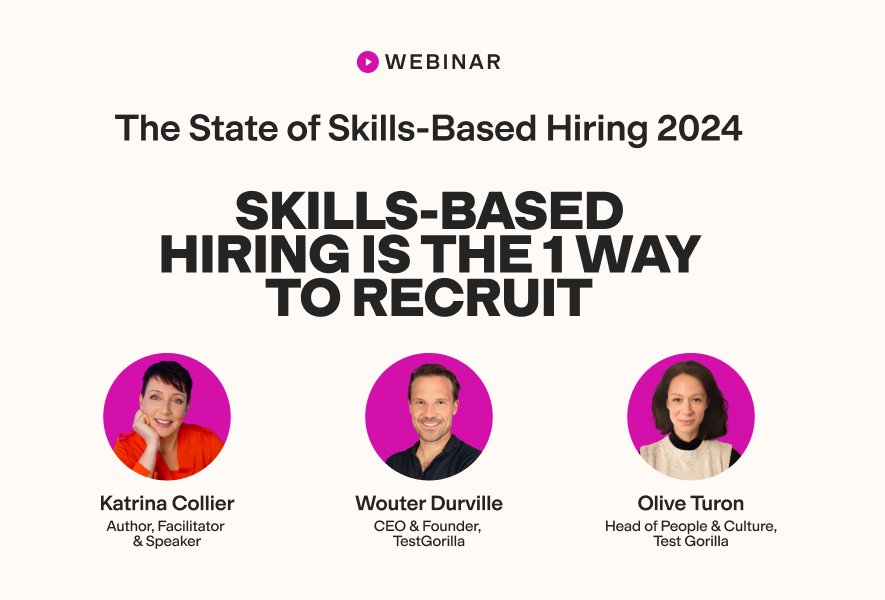How to assess data storytelling skills the right way: Experts tell all
Too many hiring teams assume someone can communicate with data because they claim to know Power BI or Tableau, link to an impressive portfolio in their resume, or seem ultra-confident during an interview.
But in practice? These candidates create complex dashboards that no one opens, reports that fail to influence direction, and presentations that yield little to no action.
If your hiring process still treats “data storytelling” as something you can spot on a resume or confirm with a portfolio, you’re likely hiring the wrong analysts. Because data storytelling isn't a vague creative “gift” – it's a testable skill. And the best teams know how to evaluate it with structure and intent.
I’ve spoken to four hiring experts – and leaned on TestGorilla’s internal experience and expertise – to show you how to assess data storytelling skills. Below, you’ll learn a proven framework that begins with talent assessments, such as our Data Storytelling test, and ends with smarter interviews.
What is data storytelling?
In essence, data storytelling combines data science and narrative communication. It involves analyzing complex datasets to draw clear takeaways, then presenting those takeaways in a form that’s compelling and understandable to C-suite executives, program managers, and even rank-and-file employees.
Data storytelling is one of the best ways to make data actionable. If you have a report that no one can understand, business leaders won’t take action on it because they don’t know what to make of it. But with a good story, you create an emotional connection to the data and enable leaders to make better decisions.
Data storytellers rely on the same narrative elements that make up a good story: an introduction, rising action, conflict, and resolution. Speaking to TestGorilla, Nikodem Gabler, marketing lead at DoubleData, shared an example narrative structure that can work in data storytelling:
The problem: ‘The business was losing money because our prices were wrong.’
The hunt: ‘I dug in and found the root cause wasn't one big error. It was a chain of smaller issues, but the real killer was a bad formula at the very core of our calculations.’
The Aha! moment: ‘Once I corrected that formula, I could see the true picture of our performance.’
The fix: ‘Here’s a two-part plan. We do this now to stop the bleeding, and we do this next week to make sure it never happens again.
However, creating a story like this is easier said than done. Many data analysts think they have a great story, but what they really have is a slideshow with dozens of complex charts that non-technical employees can’t understand.
So how can you find storytellers who know how to spin a great yarn? The key is to put candidates to the test.
Why skills-based hiring changes the game
Skills-based hiring is the ultimate solution to finding great data storytellers. By evaluating real-world storytelling skills, you can go beyond resumes and guesswork to see candidates’ true capabilities and the talent they’ll bring to your organization.
In fact, according to our 2025 State of Skills-Based Hiring report, 76% of employers are already using skills tests to make hiring decisions, and 71% agree that skills tests are more predictive of job success than resumes.
Candidates also prefer skills tests because assessments provide an opportunity to showcase their talents, regardless of their experience or background. Fifty-four percent of candidates report feeling disadvantaged by resume-based hiring, and 82% prefer holistic hiring processes that include skills tests.
While data storytelling might seem like a creative task that can’t be measured, in reality, you can use skills-based tests to quantitatively evaluate candidates and compare them head-to-head. For example, you can assess candidates’ ability to draw cohesive threads from messy datasets, think critically about tough business problems, and communicate using visual aids and unique storytelling techniques.
These are just a few of the core data storytelling skills that our hiring framework is designed to assess. Let’s dive in below to see how it works.
The best insights on HR and recruitment, delivered to your inbox.
Biweekly updates. No spam. Unsubscribe any time.
How to assess data storytelling skills: A three-step, expert-backed process
Step 1: Start with a validated data storytelling assessment
As we explained above, skills-based testing is a game-changer for hiring data storytelling candidates. So, that’s where our approach starts.
Our Data Storytelling test is the quickest way to evaluate applicants on the skills that matter most, including data analysis, data visualization, communication, and business decision-making.
We recommend combining this with related tests that assess applicants’ data exploration skills, such as our Exploratory Data Analysis, Machine Learning, and Coding tests. That way, you get a full view of a candidate’s ability to go from raw dataset to compelling narrative.
You can also evaluate soft skills, such as critical thinking and communication, which are crucial to sharing insightful recommendations from tricky datasets.
Our tests enable you to quickly identify the most qualified applicants without bias, so you can decide who to advance to the next stage of your hiring process.
Step 2: Create a data storytelling assignment
Once you have a pool of qualified candidates with proven skills, the next step is to give them a take-home storytelling assignment.
Ela Iliesi, founder of MAKE IT Academy, likes this approach because she finds it reliably “reveals the true top tier” of candidates.
“When we recruit trainers for data strategy, we give them challenges such as: 'You have one day to pick a single chart from a raw dataset and deliver a two-minute presentation to a CEO who hates numbers,’” she tells us. “Less than 10% of candidates succeed in combining visual clarity, prioritization, emotion, and a clear call to action.”
Other possible assignments you can give applicants include:
Creating a single data visualization to tell a compelling story about a report your business has already produced
Telling a data story in a series of pie charts
Turning a small dataset into a short written story
Using data to give a presentation about a topic of their choice to convince individuals on the hiring team to take action
Andrew Cussens, owner of professional film studio FilmFolk, suggests adding a twist to these assignments:
“We always add a ‘messy data’ test where we hand the candidate an overwrought social media analytics report and ask them what they’d prioritize for our chief marketing officer. The best candidates instantly filter out vanity metrics like ‘likes’ and highlight actionable patterns, such as how audience engagement corresponds with certain camera angles.”
When it comes to evaluating candidates’ assignments, there are a few things to look for.
Steve Case, a financial and insurance consultant at Insurance Hero, tells TestGorilla, “I pay attention to how the candidate would simplify complicated data and make it meaningful to the non-expert. They need to present the story behind the numbers in a format that is easy to consume and addresses the needs and concerns of stakeholders.”
Nikodem Gabler, Marketing Lead at DoubleData, says he “listens for how a candidate explains things. Can they use a simple analogy? Can they say something like, ‘Think of it this way: we were counting all our sales but forgetting to subtract the refunds.’ Most importantly, do they sound like they're in control? We want someone who reassures us, not someone who sounds like they're just as panicked as we are.”
Step 3: Ask smart interview questions
Interviewing top candidates is the final step in hiring a data storyteller. However, it’s essential to ask the right questions during your interview – we’ve found that most data analyst interview questions aren’t ideal.
Here are two approaches you can use to get more out of your interviews:
Focus on process
Many hiring teams focus on tools rather than processes, which can lead to bias towards candidates who use tools you’ve heard of at the expense of more qualified storytellers.
Instead of asking candidates questions about their experience with Microsoft Power BI, ask them about a business question they had to solve and why they thought Power BI or another business intelligence platform was the right tool for the job.
You can also ask about visualization techniques. For example, which ones do they think are most effective and why? Also consider asking a candidate whether they view themself primarily as a data scientist or a communicator.
Use simulations
Another issue with traditional interviews is that they’re often based around hypotheticals or storytelling theory rather than simulations. Theory is fine, but it doesn’t give you any insight into how a candidate will actually perform. You need to know how a candidate will react under pressure, like when they have to communicate with a panicked client or a CEO with a short attention span.
Role-playing exercises can be incredibly effective for this.
As Andrew Cussens tells TestGorilla, “We role-play high-pressure moments, such as when we have to defend a data-informed recommendation to a skeptical producer, since, in our world, the numbers should make people do something, not just inform them. That’s the difference between reporting data and telling a story with it.”
It’s easy to implement this during your interviews. Someone on your hiring team can play the role of an anxious, time-crunched executive while the candidate delivers a data presentation.
During the simulation, build on the storytelling assignment from the second step of the hiring process and ask questions that force candidates to simplify their story and defend their recommendations.
Hire the best data storyteller with TestGorilla
Hiring the right candidate to turn your business’s data into a compelling story starts with skills-based testing. With our Data Storytelling test, you can go beyond resumes and quickly identify candidates with the ability to weave messy data into a clear narrative.
Ready to transform your hiring process? Sign up for a free TestGorilla account or book a free 30-minute demo today.
Related posts
You've scrolled this far
Why not try TestGorilla for free, and see what happens when you put skills first.


